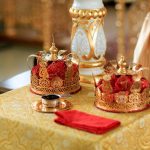Do you love quilting and want to take your skills to the next level? Long arm quilting machines may be just what you need to create stunning quilts with intricate designs and patterns. With a long arm quilting machine, you can easily stitch through multiple layers of fabric and batting, making the quilting process faster and more efficient.
But how do long arm quilting machines actually work?
In this article, we will explore the basic parts of a long arm quilting machine and how they function together to create beautiful quilts. We will also discuss the process of loading the quilt onto the frame, selecting the right thread, choosing a quilting design, operating the machine, and finishing the quilt.
Whether you are a beginner or an experienced quilter, understanding how long arm quilting machines work can help you take your craft to the next level and create beautiful, professional-looking quilts.
Table of Contents
Understanding the Basic Parts of a Long Arm Quilting Machine
Let’s dive into the nitty-gritty of a long arm quilting machine and check out its basic parts! Understanding the basic parts of a long arm quilting machine is crucial to operating it efficiently.
The machine is made up of various components, including the frame, head, motor, and needle.
The frame is the backbone of the long arm quilting machine. It serves as the support structure for the head and motor, keeping them in place while you work. The frame can either be a stationary or a movable one, depending on the type of machine you have.
The movable frame allows you to adjust the quilt size while the stationary one is ideal for working with smaller quilts.
The head of the long arm quilting machine is where the magic happens. It consists of a needle, bobbin, and thread, all working together to create beautiful quilting patterns. The head can move in different directions and at various speeds, allowing you to create intricate designs with ease.
The motor powers the head and provides the necessary force to move the needle and fabric smoothly.
Now that you know the basic parts of a long arm quilting machine, it’s easier to understand how it works. Each component plays a crucial role in the quilting process, and understanding how they work together is the key to creating stunning quilts.
Whether you’re a beginner or an experienced quilter, mastering the basic parts of a long arm quilting machine is the first step towards creating beautiful and intricate quilting patterns.
Loading the Quilt onto the Frame
Now that you understand the basic parts of a long arm quilting machine, it’s time to load your quilt onto the frame.
Before you start, you need to prepare the backing and batting.
After that, attach the quilt top and adjust the tension.
These key points are essential to ensure that your quilt is loaded correctly and will stitch smoothly.
Preparing the backing and batting
First, you’ll need to choose your backing and batting materials for your long arm quilting project. The backing is the fabric that will be on the bottom of your quilt and the batting is the material that goes in between the top and backing layers to provide warmth and thickness.
Here are three things to consider when preparing your backing and batting:
-
Choose a backing that is at least 6 inches larger than your quilt top on all sides. This allows for the fabric to be loaded onto the long arm quilting machine and for the machine to have enough room to quilt without running off the edges.
-
Consider the weight and type of batting you want to use. There are many different types of batting, including cotton, wool, and polyester. Each type has its own unique properties and will affect the final look and feel of your quilt.
-
Make sure your backing and batting are free from wrinkles and creases before loading them onto the frame. Any wrinkles or creases will show up in the final quilt and can be difficult to remove once the quilting is complete. Taking the time to smooth out your materials before loading them onto the frame will ensure a smoother and more professional-looking finished product.
Attaching the quilt top
Attaching the quilt top can be a bit tricky, but with some patience and a few simple steps, you’ll have it securely in place in no time! First, lay your quilt top on the backing fabric, right sides facing each other. Make sure the edges are aligned and smooth out any wrinkles.
Next, use your long arm quilting machine to attach the quilt top to the backing fabric. This is typically done with either pins or clips. In the table below, you can see the pros and cons of each method. Whichever method you choose, make sure the quilt top is taut and smooth before proceeding with the quilting process. With practice and a bit of patience, attaching the quilt top will become second nature to you.
| Method | Pros | Cons | ||||
|---|---|---|---|---|---|---|
| Pins | Easy to place | Can cause puckering or shifting | ||||
| Clips | No risk of puckering or shifting | Can be more difficult to position | Spray Adhesive | No risk of puckering or shifting | Can be messy and difficult to reposition if necessary |
Adjusting the tension
Get ready to tweak your machine’s tension settings for the perfect stitch, and watch your quilting project come to life! Adjusting the tension on a long arm quilting machine is crucial to achieving a beautiful finished product.
The tension needs to be just right so that the top and bottom threads interlock in the middle of the quilt sandwich. If the tension is too loose, the stitches will be sloppy and the quilt will fall apart. If the tension is too tight, the thread can break and the machine can jam.
To adjust the tension, you’ll need to find the tension dial on your machine. Usually, it’s located on the front of the machine or on the handlebars. Turn the dial clockwise to increase the tension and counterclockwise to decrease it.
It’s important to make small adjustments and test the stitch on a scrap piece of fabric before moving on to your quilt. Keep adjusting until you achieve the perfect stitch, and your quilting project is complete!
Selecting the Right Thread
When you’re choosing your thread for long arm quilting, you’ll want to think about the type of fabric you’re using and the effect you want to achieve. Here are some things to consider when selecting the right thread:
-
Weight: The weight of the thread should be appropriate for the thickness of the fabric. A heavier weight thread can overpower lightweight fabrics and cause the stitching to look bulky. On the other hand, a lighter weight thread may not be strong enough to hold up to heavier fabrics.
-
Color: The color of the thread should complement the fabric and the design of the quilt. Consider whether you want the thread to blend in or stand out. If you’re unsure, try using a neutral color that matches the background fabric.
-
Fiber content: The fiber content of the thread should match the fabric. For example, if you’re quilting with cotton fabric, use cotton thread. If you’re quilting with silk fabric, use silk thread. This ensures that the thread and fabric will shrink and stretch at the same rate, preventing puckering and distortion.
By keeping these factors in mind, you can select the right thread for your long arm quilting project. Remember to test your thread on a scrap piece of fabric before starting the actual quilting process to ensure that it produces the desired effect. Happy quilting!
Choosing a Quilting Design
Now that you’ve selected your thread, it’s time to choose a quilting design that will enhance the overall look of your quilt. The design you choose should complement the style and theme of your quilt.
There are various types of quilting designs that you can choose from, such as geometric, floral, or abstract patterns. You can also opt for custom designs that are unique to your quilt.
When choosing a quilting design, consider the size of your quilt and the space you have to work with. Large quilts may require a more intricate design, while smaller ones may look better with a simpler pattern.
You should also think about the type of quilting machine you have and its capabilities. Some machines can handle more complex designs, while others are better suited for simpler patterns.
To make the most of your quilting design, it’s important to practice on a scrap piece of fabric before working on your quilt. This will help you get a feel for the design and ensure that you’re comfortable with the machine settings.
Once you’re ready to start quilting, take your time and work slowly to ensure that your stitches are even and consistent. With a little practice and patience, you’ll be able to create a beautiful quilt that showcases your chosen design.
Operating the Machine
Operating the machine can seem intimidating at first, but with a little practice and patience, you’ll be able to create beautiful quilts with ease. As with any machine, it’s important to read the manual thoroughly before beginning. Familiarize yourself with the different buttons and controls, and practice on scrap fabric before moving on to your actual quilt.
Once you’re ready to start quilting, it’s important to choose the right thread and needle for your project. Different fabrics and designs will require different types of thread and needles, so make sure to do your research beforehand. It’s also important to keep your machine well-maintained, cleaning and oiling it regularly to ensure smooth operation.
As you begin quilting, refer to the table below for some basic tips and techniques to keep in mind. Don’t be afraid to experiment and try new things, but remember to always take your time and work at a steady, consistent pace. With a little practice and some helpful guidance, you’ll soon be creating beautiful, professional-looking quilts with your long arm quilting machine.
| Tip/Technique | Description | Example |
|---|---|---|
| Tension | Adjust the tension to ensure even stitches | If the thread is too loose, the stitches will be uneven. If it’s too tight, the fabric may pucker. |
| Speed | Work at a steady pace to avoid mistakes | Start with a slower speed and gradually increase as you become more comfortable. |
| Direction | Move the machine in the right direction for the design | For a simple meandering design, move the machine in a random, curved pattern. For a straight-line design, move the machine in a straight line. |
Finishing the Quilt
Now that you’ve finished quilting, it’s time to take your quilt off the frame and start the finishing process.
First, you’ll need to carefully remove the quilt from the frame, making sure not to damage any of your hard work.
Then, you’ll need to trim and bind the edges to give your quilt a finished look.
Finally, you’ll want to wash and block the quilt to ensure that it looks its best and lasts for years to come.
Removing the quilt from the frame
First, you’ll need to carefully remove your beautiful quilt from the frame, taking care not to damage all of your hard work and creativity. Start by loosening the tension on the quilt and gently lifting it off the rollers.
Be sure to support the weight of the quilt as you remove it from the frame, as it can be quite heavy and cumbersome. Once you have the quilt off the frame, you can inspect it for any remaining loose threads or areas that may need additional quilting.
Here are some key steps to follow when removing your quilt from the long arm quilting machine:
-
Loosen the tension on the quilt and lift it off the rollers.
-
Support the weight of the quilt as you remove it from the frame.
-
Inspect the quilt for any remaining loose threads or areas that need additional quilting.
-
Take a moment to appreciate all of your hard work and creativity, and enjoy your beautiful finished quilt!
Trimming and binding
Ready to give your quilt that professional finishing touch? Let’s jump right into trimming and binding!
Once your quilt is off the frame, it’s time to trim the edges to ensure they’re even. Use a rotary cutter and ruler to trim the edges of your quilt, making sure to cut off any excess batting and backing fabric. This step is important because it’ll make sure that your quilt looks neat and tidy, and it’ll also make it easier to add the binding.
Once your edges are trimmed, it’s time to add the binding. Binding is the final step in finishing your quilt and will give it a polished look. You can use pre-made binding or make your own by cutting strips of fabric and sewing them together. Then, fold the binding in half and attach it to the edges of your quilt using a sewing machine.
Once the binding is attached, fold it over to the back of the quilt and hand-stitch it in place. And voila! Your quilt is now complete and ready to be enjoyed.
Washing and blocking
To really make your quilt shine, you’ll want to give it a good wash and block it for the perfect finish. Washing your quilt removes any excess dye or chemicals and can help the fibers relax and become softer. Blocking, on the other hand, helps to ensure that your quilt is square and the edges are straight.
When it comes to washing your quilt, there are a few things to keep in mind. First, make sure to use a gentle detergent that is free of bleach and fabric softeners. You can wash your quilt by hand or in a washing machine on a delicate cycle, but be sure to use cold water and avoid any harsh agitation. Once your quilt is clean, it’s time to block it. This involves stretching and pinning your quilt to a flat surface, such as a design wall or a large piece of foam board, to ensure that it dries in a square and even shape. Check out the table below for a quick summary of the washing and blocking process.
| Washing | Blocking | |||
|---|---|---|---|---|
| Use a gentle detergent | Stretch and pin to a flat surface | |||
| Wash by hand or on a delicate cycle | Ensure quilt dries in a square and even shape | |||
| Use cold water | ||||
| Avoid harsh agitation | Gently squeeze out excess water, but do not wring or twist |
Maintenance and Troubleshooting
If you’re experiencing tension issues with your long arm quilting machine, don’t panic – there are a few quick and easy troubleshooting steps you can take to get back to quilting in no time!
First, check that your needle is properly inserted and not bent. A bent needle can cause tension issues and even damage your machine.
Next, make sure your thread is properly threaded through the machine – sometimes a small mistake can cause big tension problems.
Finally, check your bobbin – make sure it’s inserted correctly and that the thread is properly wound.
Regular maintenance is key to keeping your long arm quilting machine running smoothly. It’s important to keep your machine clean and dust-free, as buildup can cause issues with tension and even cause your machine to break down.
You should also oil your machine regularly as instructed in the manual. Another important aspect of maintenance is checking for loose screws or bolts, as these can cause vibrations and affect the overall performance of your machine.
If you’ve tried all of the troubleshooting steps and your machine is still not working properly, it may be time to call in a professional technician. Don’t try to fix the issue yourself if you’re not experienced with long arm quilting machines – you could end up causing more damage.
It’s always better to be safe than sorry when it comes to expensive machinery. Remember, regular maintenance and quick troubleshooting can save you time and money in the long run!
- How Khadi Fabric Is Made: A Step-by-Step Look at the Hand-Weaving Process - June 24, 2025
- What Is Khadi? The Ultimate Guide to India’s Hand-Spun Fabric - June 24, 2025
- What Is a Selvedge in Textiles? a Fabric Glossary Definition - June 24, 2025






